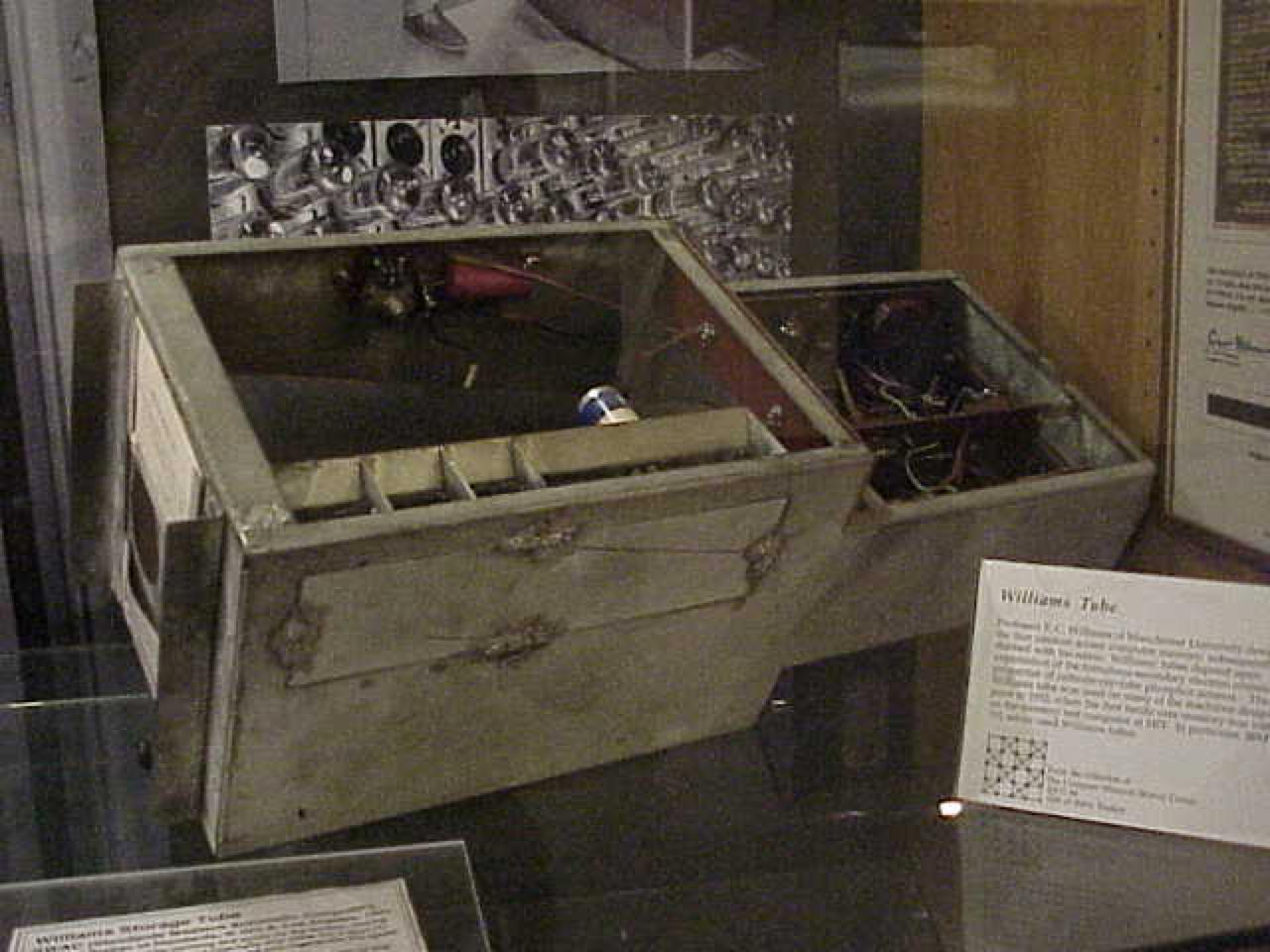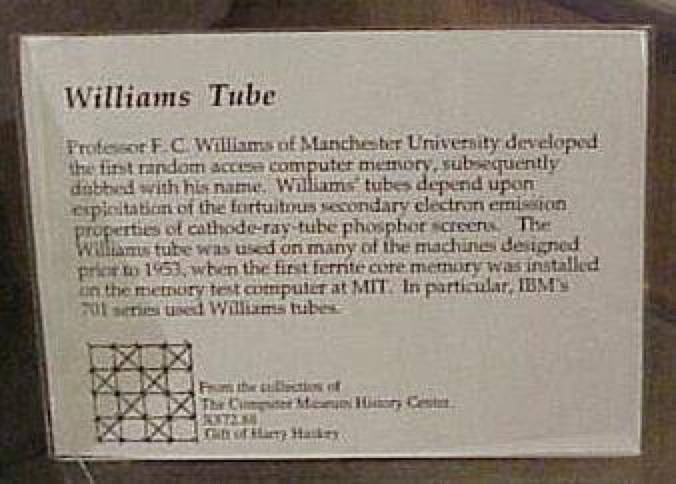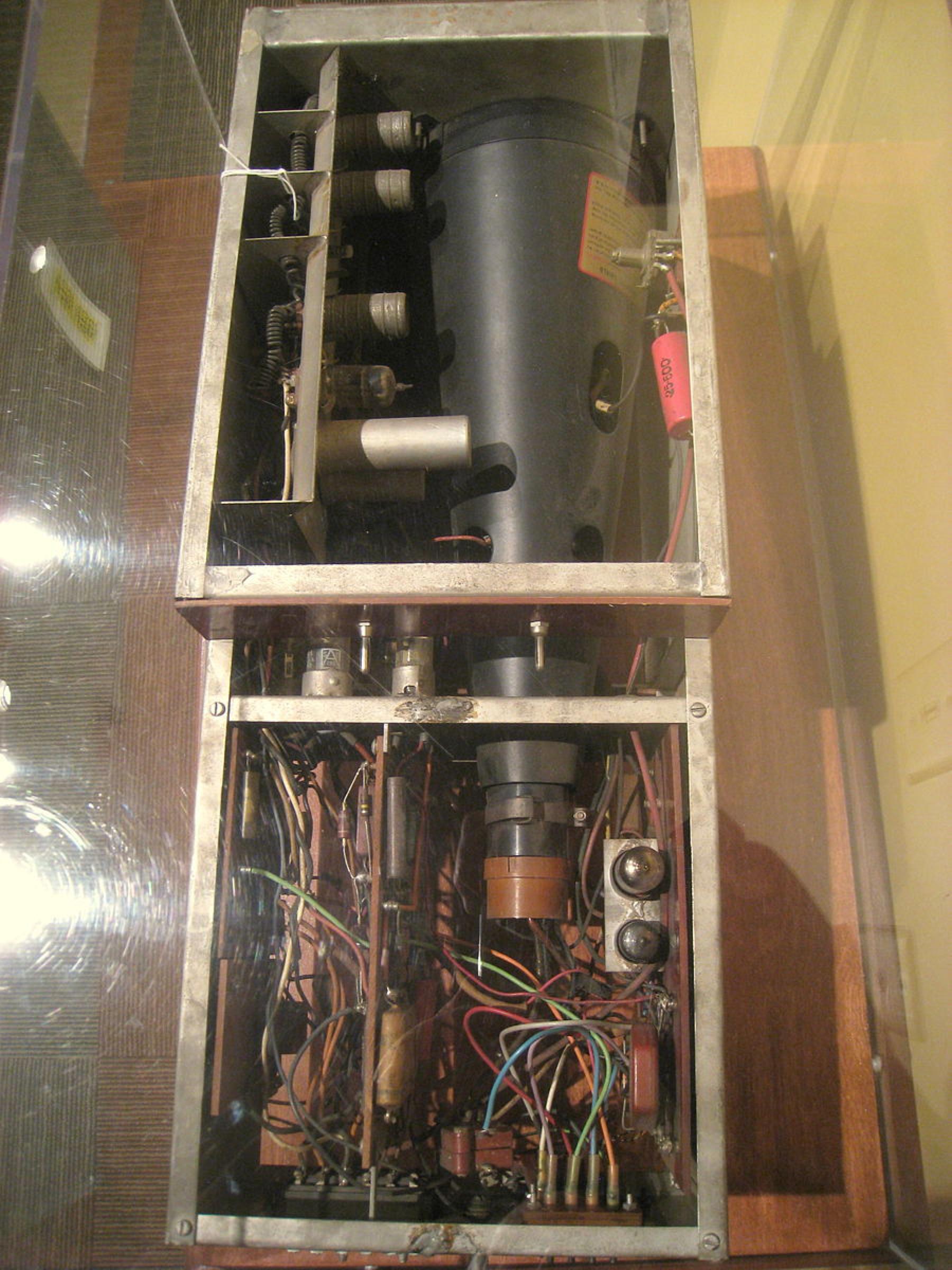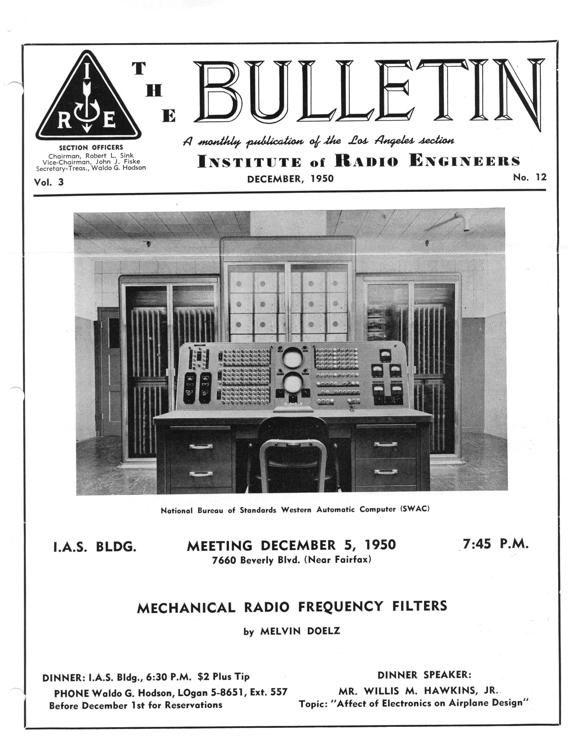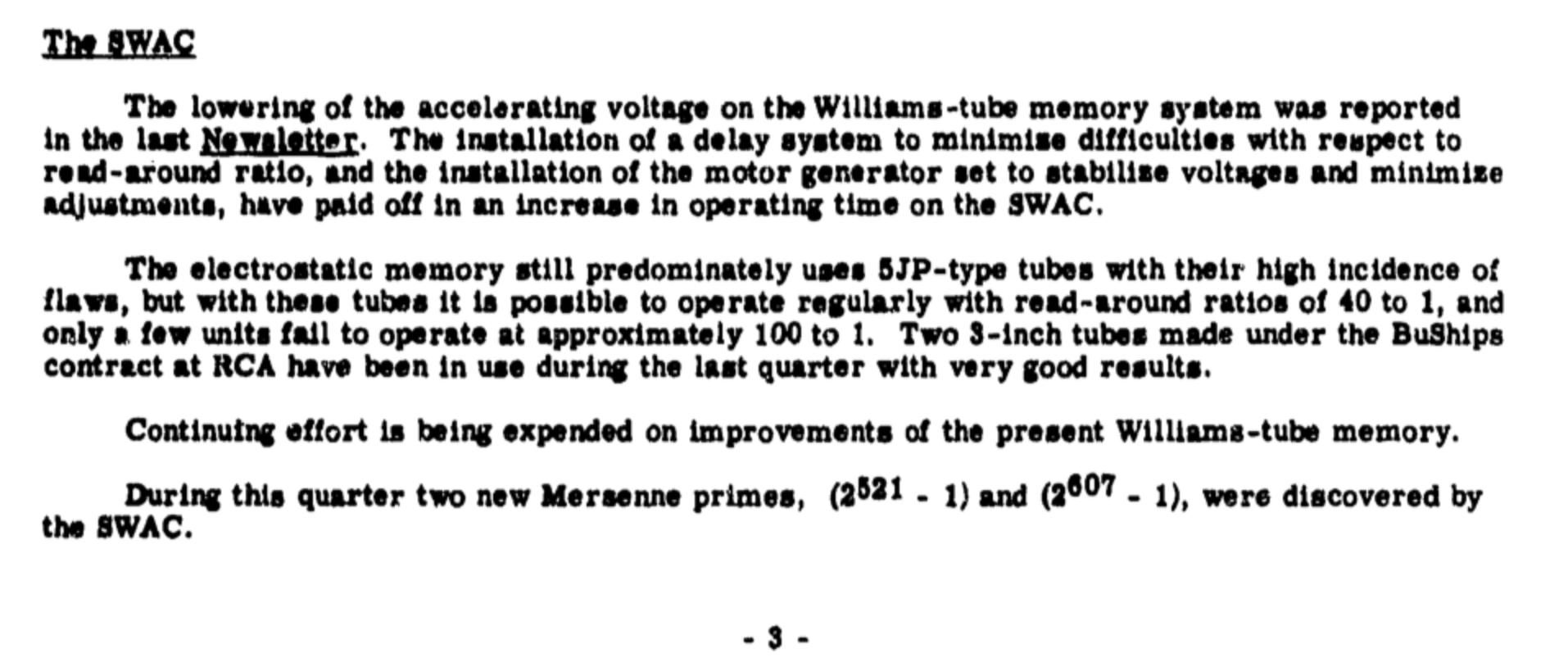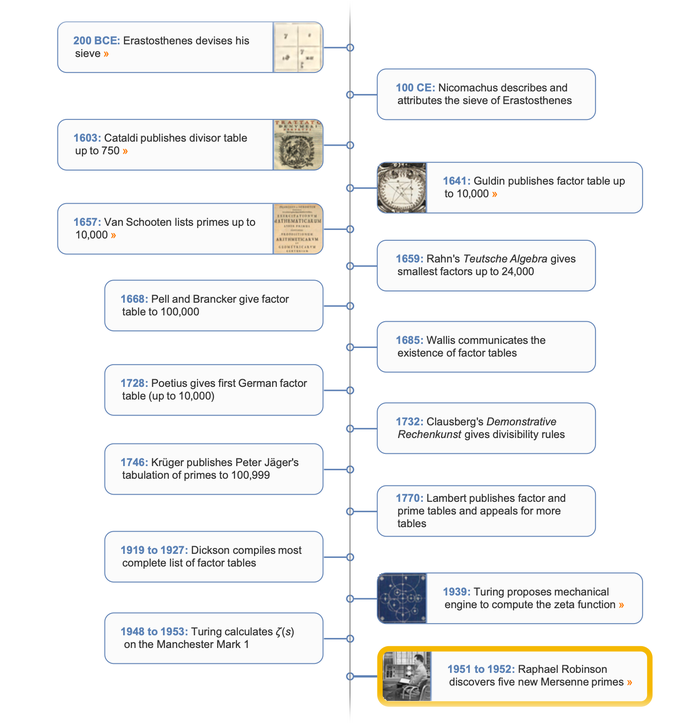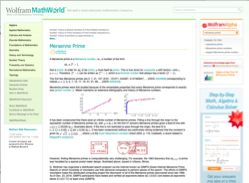1952
SWAC Computes New Mersenne Primes
Five new Mersenne primes
An early electronic computer called the SWAC was used to find the five largest prime numbers known as of 1950.

The SWAC (an acronym for Standards Western Automatic Computer) was an early electronic digital computer built in 1950 by the U.S. National Bureau of Standards (the previous name for the present National Institute of Standards and Technology) in Los Angeles. At the time of its completion in August 1950, it was the fastest computer in the world. In January 1952, mathematician Raphael Robinson used the SWAC to discover five new Mersenne primes, i.e. prime numbers of the form 2^n–1, with n = 521, 607, 1279, 2203 and 2281. Upon their discovery, these numbers were the largest known prime numbers, having 157, 183, 386, 664 and 687 digits, respectively. One of the computer's electrostatic memory tubes is preserved and displayed as part of the Computer History Exhibits at the Gates Computer Science building at Stanford University.
